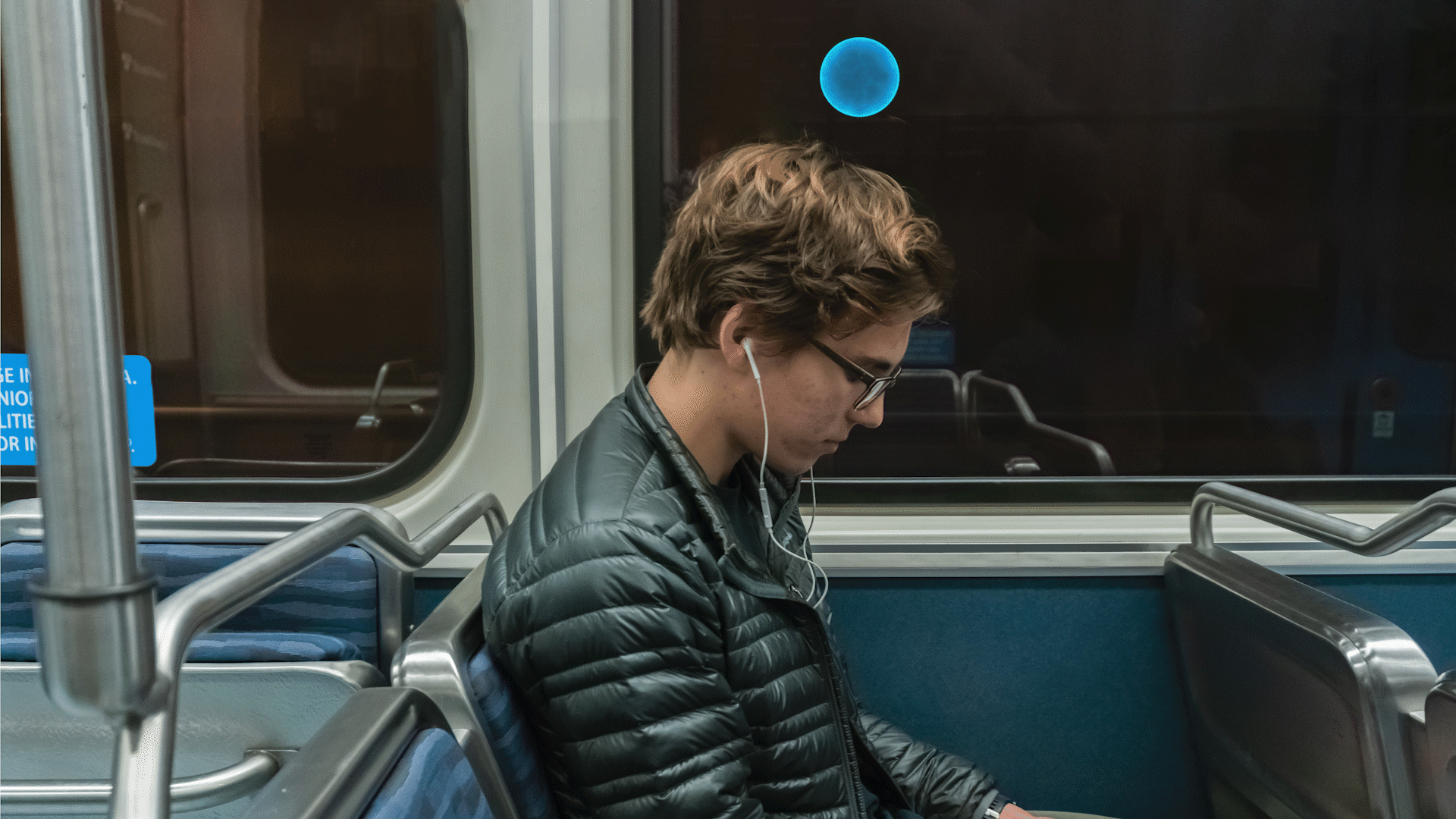Encounter
Overview:
As a team, we were prompted to design a future-focused music listening experience and pair our product with AR technologies. Encounter is a Spotify feature that connects people through shared listening experiences in real-time. Working to drive further interactions in the real world, we used Augmented Reality to help users identify with whom they are listening with.
Context:
5 Weeks, Foundations of Interaction Design Course, University of Washington
What I did:
Feature Design, Product Brainstorming, and Script and Video Editing

Identifying the Problem
“I have this innate urge to share music with those around me”
“It’s a form of public expression”
“Discover weekly is just an algorithm, and it doesn’t surprise me anymore”
The current listening experience:
- No time to actively search for new music
- Crave genuine human connection
- An unfulfilled desire to share their music with others
How might we facilitate human connection through the discovery and sharing of music?
Goals
- Device ambiguous
- Redesign an experience, not a streaming service
- Use music as a means to connect people
- As few features as possible
Music is a special thing. It is a universal language that evokes emotion and memories. It connects people. The ability to share these moments and these spaces is rather magical.

What does Encounter do?
- Allows users to join streaming sessions of those around them
- Provides a space for users to share and discover music with one another
- Connects users to real-time listening in the physical world
Features
- AR listening indicators (color coordinated streams)
- Private mode
- Momentary connections
- Music fades based on distance

“So on the ocean of life, we pass and speak one another, Only a look and a voice, then darkness again and a silence.”
Do we really need to make another app?
As a group we discussed what a full-fledged app might look like, everything from listening feeds to private messaging. After a lot of consideration, we decided to focus on keeping Encounter simple for the sake of privacy and human connection. Inspired by an excerpt from Henry Wadsworth Longfellow’s Tales of a Wayside Inn, we worked to honor “Ships That Pass In The Night”. This helped us focus on creating a meaningful momentary interaction rather than a complex system for shared streaming.


My role
After brainstorming the original idea as a group, I recognized the simplicity of our concept and took on the role of feature design. I focused on integrating Encounter with existing technologies and working through the experience to keep the concept uncluttered and aligned with our principles.
This project was also an exercise in successful leadership. Helping guide brainstorming sessions and prompting discussions to confirm we were all focused on the same goals ensured a final deliverable everyone was happy with. I also worked to keep an open dialogue with Ariana and Cecilia to acknowledge my privilege and create space for my teammates to share opinions and feel heard.
Reflection
Working on Encounter was an amazing experience. As a team we were able to create strong lines of communication and trust, allowing each member to focus on their contribution. While at first we struggled with time management, our group quickly addressed the issue by working together to plan out personal deadlines.
With more time we would have liked to further explore the idea of repeat listeners. Perhaps after linking up for a second or third time you would be able to learn more about the other listener, perhaps other music they like or even their name. Lastly, I would have liked to explore additional methods to drive interaction past just music listening, hoping to better bridge the digital world with the physical.